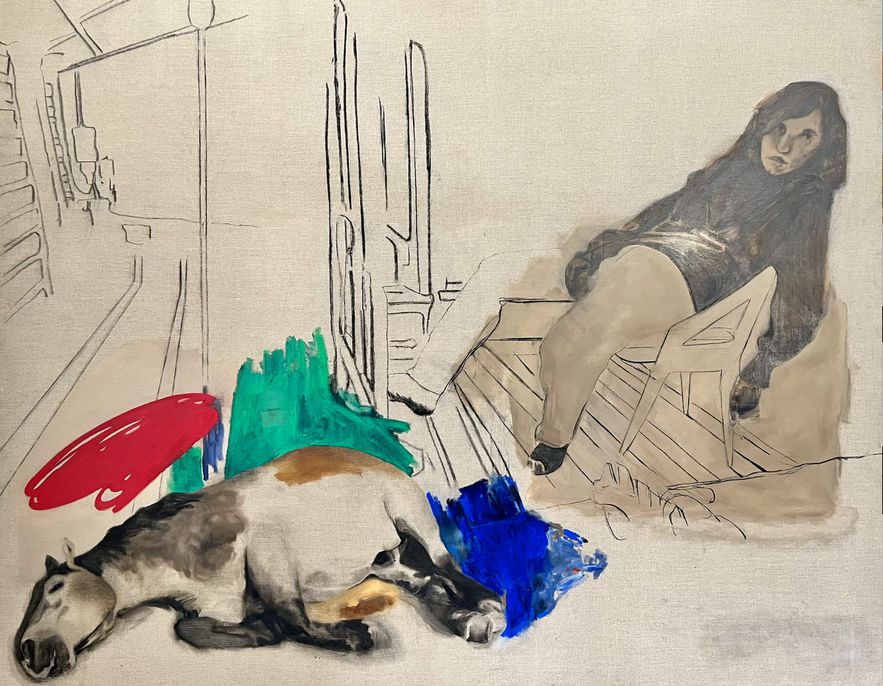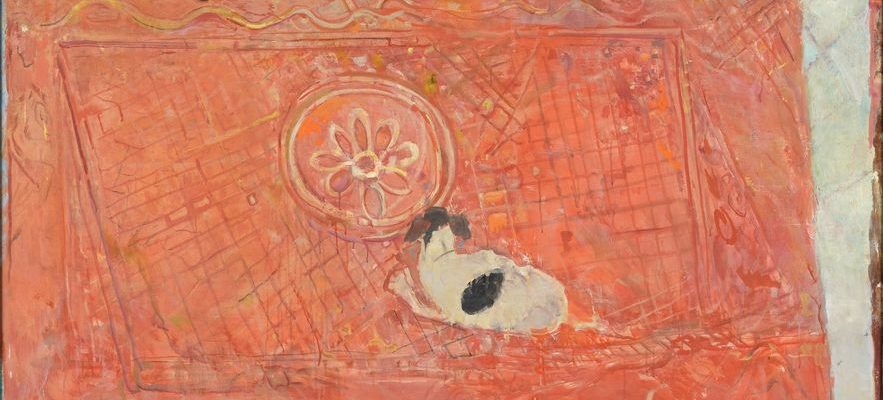The notoriety of Andrew Wyeth (1917-2009) and his symbolist realism is well established across the Atlantic. He is the famous author of Christina’s World, star painting from 1948 kept at the MoMA in New York, which sees a crippled young woman from behind, her frail wrists clenched on the grass of a field, her body turned towards a gray house on the horizon. The American also had his heyday in France, where his work was shown at the Claude Bernard gallery in 1981, and where he was even dubbed a member of the Academy of Fine Arts in Paris. Despite these positive signals, no French museum has acquired works by Wyeth. Only a few private collectors were interested in it, like the (anonymous) holder of the Elder Raft, the only painting by the painter on French soil, which Maison Caillebotte, in Yerres (Essonne), has managed to track down. She opens the exhibition today Figuresdevoted to a genre diffused after the war in France and abroad but shunned by our museum institutions, at a time when abstraction reigned supreme in France.
About this Raft, the art critic Guy Boyer saw a resonance with the subject of the Yerrois course of which he is the curator: “From the windows of a lighthouse in Maine, the ocean is profiled with these birds resting on the water, and then there is this huge bell which is stopped, like a call to sailors who are lost. This echoes our project: we have to wake up, look for these artists neglected by museums.” Andrew Wyeth therefore plays here as much the role of a tutelary figure as a prologue to a chronological wandering that highlights and puts into perspective 35 artists, deceased or alive, who worked from the 1950s to 2000. Over the sections, unrolled within the walls of la Ferme ornée, succeed and respond to each other with forgotten works and names, except for two on the way to recognition, Sam Szafran and Gilles Aillaud, the first in an exhibition which triumphed at the Orangerie des Tuileries the year the latter, the second via a retrospective scheduled at the Center Pompidou in the fall of 2023.
Among the 33 remaining unknown to the general public is Pierre Lesieur (1922-2008), close to the world of the Nabis, Bonnard, Matisse, two masters to whom he was compared throughout his life: Bonnard for landscapes, Matisse for the nudes. On loan from the Claude Bernard gallery, The dog reflects the painter’s stubbornness to pursue his personal path without worrying about the trends of the moment. “The perspective is readable there only with the corner of the room at the top right, while the rest of the frame sees, as in these paintings of the 19th century, the straightened perspective: the carpet is vertical and the dog seems to cling to the central motif, the only variations being these undulations in the foreground and these splendid colors in the spirit of Bonnard”, underlines the curator.
Pierre Lesieur, “Untitled” (The Dog), 1992. Courtesy Galerie Claude Bernard.
/ © ADAGP, Paris 2023
A contemporary of Lesieur, Avigdor Arikha (1929-2010), a Franco-Israeli Jew from Romania, interned at the age of 12 in a concentration camp in Transnistria from 1941 to 1944, also had his own obsessions, as evidenced by the series uncompromising self-portraits hung here. One puts it en abyme in the mirror behind the easel, in the style of Velasquez, a recurring source of inspiration for these post-war figuratives. The others show him naked, thus joining Dürer or Schiele, rare creators who have dared over the centuries to depict their aging bodies. Arikha’s tragic memory never ceased to haunt her palette.
A stone’s throw from the Ferme ornée, the Orangerie houses the works of twelve young young artists of today who embody, in an assumed subjective selection, the new trends in figuration in France. Exhibited three by three according to a hanging renewed every month and a half during the main exhibition, they share the places in a “carte blanche” spirit, like Nicolas Sage, Manon Pellan and Dora Jeridi, trio composing the first shutter.

Dora Jeridi, “The poisonous harvest”, 2022. Private collection, courtesy of Dora Jeridi.
/ © ADAGP, Paris 2023
With the old controversy surrounding figurative art now dead, these new generation artists will probably not know the fate of their silenced elders who persevered, supported and “acknowledged” by a few insiders in the art world. Hence the strong tribute from Valérie Dupont-Aignan, director of the Maison Caillebotte, to the gallery owners Suzanne Tarasieve and Claude Bernard, as well as to the director of the Fondation Custodia Ger Luijten, who died last year during the development of this exhibition of which they were essential partners.
